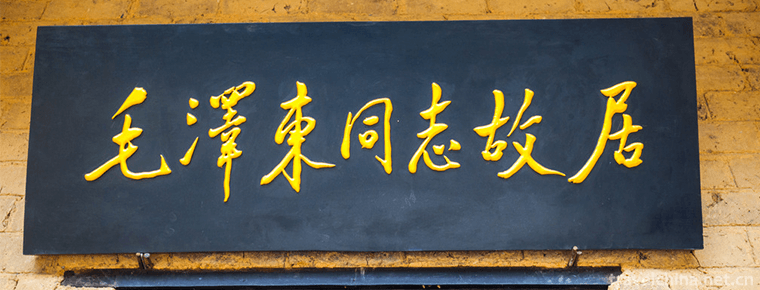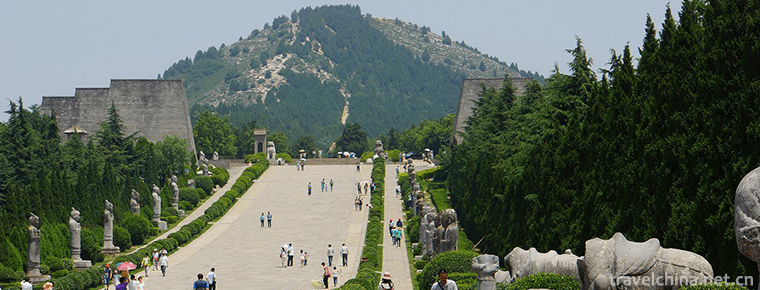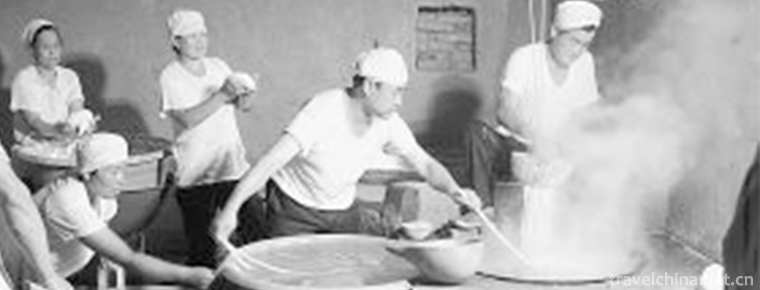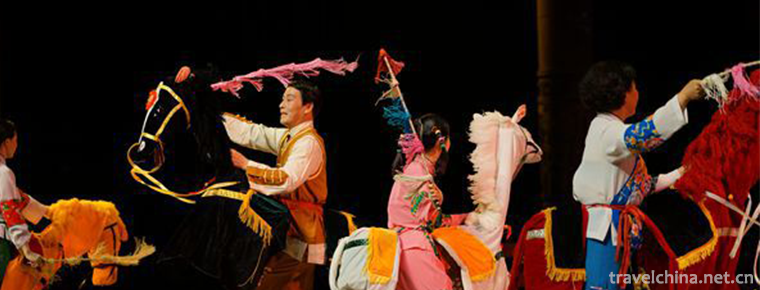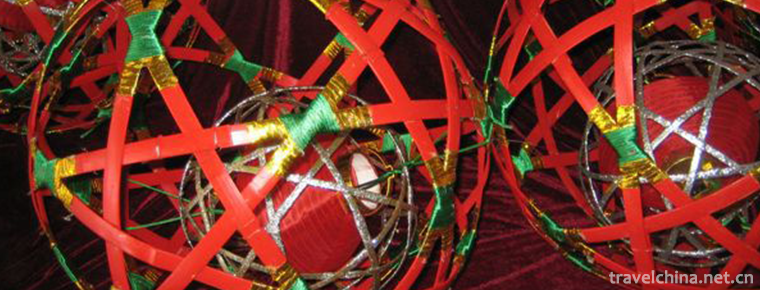Jiaodong drum
Jiaodong drum
Jiaodong Drum is a folk folk folk art form which originated in the coastal counties of Jiaodong Peninsula. It has a history of more than 260 years so far. It originated from the blind tune and widely spread in Jiaodong Peninsula. It has strong local characteristics and simple local flavor, and is deeply loved by the local people.
The artistic means of Jiaodong drum are mainly rap and singing. It tells stories through rap and singing, catches and draws characters, introduces the environment and renders the atmosphere. Speak kindly and sing beautifully. Its characteristics are simple and easy, one or two people, one or two musical instruments, or even a person with a festival drum board, without makeup, without clothes, go where you rap and sing. Jiaodong drum has a wide range of tones, and its pitch varies greatly. It is high-pitched and tactful. It is very rich and pleasant. It has always maintained a healthy and simple local flavor.
In 2006, the "Jiaodong Drum" declared by Yantai City, Shandong Province, was approved by the State Council and listed in the first batch of national intangible cultural heritage list, project number V-11.
Historical evolution
Jiaodong drum is a kind of big drum book, originally known as the "Eight-board Spectrum". For a long time, its singers are blind, so it is also known as the blind tune, blind singing, blind tune. Legend has it that the grandfather of the Great Drum Book was Dongfangshuo during Emperor Wudi of Han Dynasty. Dongfangshuo is proficient in literature and history. He is ingenious and resourceful, and can make inferences. The emperor asked him to teach four blind apprentices. The older apprentices learned fortune telling, the second apprentices learned to speak big drum books, the third apprentices learned to mill, and the four apprentices were the worst. They only learned to "call the street" (begging for food).
Jiaodong drum is a form of drum music. Its founder was Shi Yuanlong of Zouxian County in Jiaqing period of Qing Dynasty. It has been passed down for ten generations and has a history of nearly 200 years. The main epidemic areas are rural areas of Zou, Teng and Yazhu counties in southern Shandong Province and parts of Zaozhuang City. In the early period, it was called "Penglai Drum", "Fushan Drum" and "Rongcheng Drum" because of its popularity. According to Liu Xueyi, Rongcheng in the early years of Qianlong, it has a history of at least 260 years.
Dagushu has a history of about 250 years in Jiaodong area. In the past, Dagushu was very popular in Jiaodong area. Every County said Dagushu, and its name was not uniform. Most of them were named by place names, such as Qixia Dagu, Haiyang Dagu and Laiyang Dagu. Blind people wander between villages and villages all year round and live by singing the harmony of the blind and fortune telling. At that time, most of the songs sung by blind artists reflected the life of the lower class. It is said that the artists of Dagushu have a well-organized self-governing organization for the blind, called the "Three Emperors'Association". Every year on the fifth day of May in the lunar calendar, the "Three Emperors'Meeting" is held, mainly to rectify discipline and punish blind people who violate gang rules.
In 1938, the Jiaodong Cultural Association (Jiaodong Cultural Rescue Association) was established, and then the county cultural associations were established one after another. In order to carry out anti-Japanese propaganda, the Cultural Association has sent its personnel to contact the blind and their organizations extensively, to play their role and mobilize the people to fight against Japan. In the early September of the 1942 lunar calendar, the Yashan area was liberated. A man named Jiang Yan from Qixia Jingzibu, sent by the Jiaodong Cultural Association, convinced Dong Riqing, the then president of the Three Emperors'Association, to organize the blind and propagandize the fight against Japan and save the nation. Shortly afterwards, the "Three Emperors'Association" was abolished and the "Yashan Base Blind People's Congress for Resisting Japan and Saving the Nation" was established. Dong Riqing was the president, and four groups headed to the countryside to publicize the anti-Japanese and saving the nation. For this reason, Qixia has become one of the earliest areas in Jiaodong to organize blind people to propagate the anti-Japanese war with big drum books.
In the 1920s, blind people in all parts of Jiaodong Peninsula absorbed the tunes of Donglu Dagu, Laiyang Tanci and Maoqiang, and gained new development. In 1949, Liang Qiangguang entered Qingdao to perform and began to be named "Jiaodong Drum".
Popular area
The main epidemic areas are Zou, Teng and Yazhu counties in southern Shandong and some areas in Zaozhuang city, as well as Penglai, Huangxian, Yantai, Fushan and Muping areas.
Inheritance and protection
Current situation
While Jiaodong drum is gradually on the stage, now Jiaodong drum is facing the problem of lack of successors. As the first batch of 518 intangible cultural heritage, Jiaodong drum is in an endangered situation. The artists who sing Jiaodong drum are green and yellow, and they are facing the problem of lack of successors. Although the cultural department has done a lot of excavation, rescue, inheritance and promotion work with the vigorous support of the government, there are still many problems that are difficult to solve in Jiaodong Drum. First, the social basis on which Jiaodong Drum relies for survival and development has changed, and the display platform of Jiaodong Drum in the vast countryside has been decreasing day by day. Second, some accomplished actors have gradually withdrawn from the stage because of their age, and some have died one after another. At present, there are only a handful of Jiaodong drum actors active on the literary and artistic stage. Thirdly, with the progress of science and technology and the development of market economy, people's cultural life is becoming richer and richer, and their aesthetic needs are increasing. The development of Jiaodong Drum is difficult and the endangered situation is difficult to change. For this reason, if we do not train new people quickly, this national intangible cultural heritage will become invisible and intangible heritage.
protective measures
In order to protect the inheritance and development of Jiaodong Drum, the cultural department has set up a leading group for the protection of Jiaodong Drum, formulated a five-year protection plan, focusing on the establishment of five protection mechanisms, improving the protection awareness of cadres and the masses, and gradually improving the dynamic sustainable development protection system. These five protection mechanisms are as follows: a leadership system construction mechanism with cultural strategy orientation, development blueprint orientation, work decision-making timing, leading group appointment, cadre responsibility assignment and capital investment quota as the main contents; a talent team construction mechanism with existing actors, new actors, experts and scholars in step and complementary interaction; and an original ecological protection and complementary mechanism with original flavor. Continuous improvement of skills, development and innovation, and coordinated development of the dynamic and sustainable protection mechanism; the combination of brand effects and daily performances, to create a brand-driven general performance activities mechanism; the development of Jiaodong Drum Art and the development of Jiaodong drum industry, based on industrial entities, to develop Jiaodong drum for the purpose of the art market operation mechanism.
Selected non Heritage
In 2006, the "Jiaodong Drum" declared by Yantai City of Shandong Province was listed in the first batch of national intangible cultural heritage list with the approval of the State Council.
representative figure
Wu Xianda (1917-1985), a native of Zhifu District, Yantai City, Shandong Province. Blind from childhood, poor family can not make a living, so Muping Dongshangzhuang blind artist Yipu as a teacher, singing drums. His master is Gao Jiemei, a famous blind artist in Huangxian County. The drum used to be "Huangxian Diao". Wu Xianda has accurate ear sounds, excellent sense of music, years of hard practice of three strings, skillful playing skills, can skillfully change silk strings, imitate various sounds of chicken song and bird call, especially like to imitate opera singing, his voice is bright, singing charm is mellow, talent is intelligent, although blind and active thinking, artistic creativity. As a result of living in Yantai for a long time, I often go to various entertainment places to listen to books and plays. It can melt many tunes, such as Beijing Opera, Xihe Drum and Jingyun Drum, into the drum book, making the original flat and rigid singing tone extremely relaxed, beautiful and moving, fresh and energetic. Self-playing drum board, self-operating three strings, self-accompanying singing, varied and closely coordinated. If you don't see it, it's hard to believe that a blind artist is singing by himself. In June 1957, he participated in the first performance of Shandong Province, performing the Jiaodong drum "Liu Ling Drunken", and received the second prize in singing and music awards with continuous applause and warm reflection. Wu Xianda has many catalogues of traditional songs, such as Yuanwi, Lu Mengzheng's teaching, Tan Xiangnu's crying melon, Cao Xiuying's selling prose and so on. There are seven or eight middle and long works, such as The Story of Red Lantern, Zijin Bracelet and Jinbao Biography. Wu Xianda died in Yantai in 1985.
Peng Runzhi (1911-1976), also known as Yunzhi, is a villager in Yatou Town, Rongcheng, Shandong Province. Blind from childhood, 6-year-old with his father to learn the local drum tune. Wang San and Kang Ba, 11-year-old blind worshippers, studied drums and divination, and went with their teachers to sell and sing in Northeast China and Korea. In 1942, the blind artists organized the "Three Emperors'Club" and changed it to "The Blind Resist Japan and Save Congress", with Peng Runzhi as president. Although Peng Runzhi is a blind person, he has solid foundation, excellent sense of music, mellow and loud voice, simple and smooth singing, and emphasizes the popularization and popularization of the white language. Art is full of innovative spirit. The drums are mainly sung in the local tunes of the East China Sea of Jiaodong. They widely absorb the nutrients of Peking Opera, opera criticism and Xihe drum music and form a unique style. The people in the base area call them "Peng Diao drums". Peng Runzhi joined the Communist Party of China in 1947. In 1948, he joined the Quyi Team of the Arts and Works Troupe of Jiaodong Cultural Association. After the liberation of Qingdao in 1949, he was the quyi captain of Qingdao Wenlian Literature and Works Troupe. In 1952, he was transferred to Qingdao Blind and Dumb School as deputy principal. In 1958, he retired because of illness and returned to his hometown, Rongcheng. After recovering from illness in 1960, he became the leader of Rongcheng County Quyi Team and was named a model Party member. He was also known as a member of the Red Quyi Team. During the Cultural Revolution, they were criticized. He died in the autumn of 1976.
Liang Jinhua, female, Han nationality, born in August 1944 in Qingdao, Shandong Province. In June 2009, Liang Jinhua was selected as the representative successor of the third batch of national intangible cultural heritage projects, which was declared by Yantai City, Shandong Province. When Liang Jinhua was 9 years old, he followed his father Liang Qianguang, the founder of Jiaodong Drum, to study Jiaodong Drum. Liang Jinhua's performance, drums and drums are crisp and crisp, singing humorous and performing M Cho. On the basis of inheriting his father, he boldly draws on the essence of sister art to enrich this song, singing more feminine soft, witty and smart, with beautiful tone and flexible head. Its representative works include "pig eight quit arched land", "Xiang Yu Shou Shou", "Zhu Geliang beating a dog", "Purple Gold Bracelet", "bee Ji", "call Yang together soldier", "Heaven Gate Array" and so on.
Quyi value
With the care and support of the Party in the base areas and liberated areas, Jiaodong Blind Rescue Society and Jiaodong Drum have gone through a glorious journey and made indelible contributions to the War of Resistance Against Japan, the War of Liberation and the socialist economic construction after the founding of New China.
The big drum in Jiaodong occupies an important position in the folk culture of Jiaodong. It is a microcosm of the rich and colorful folk culture in Jiaodong. It played an important role in various historical periods, especially in the period of the Anti-Japanese War. The excavation, rescue and protection of Jiaodong Drum will play an important role in promoting the construction of spiritual civilization, enriching the cultural life of the people, improving the quality of the people, promoting the all-round development of the people and building a harmonious socialist society.

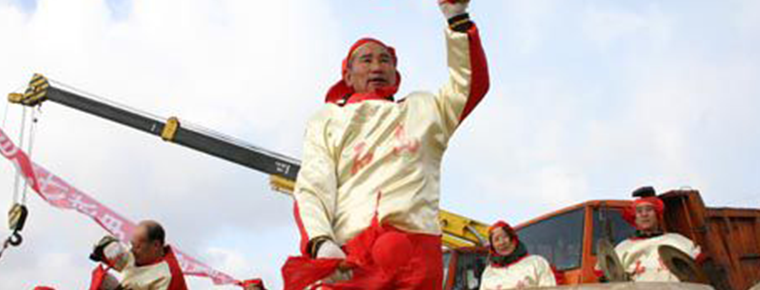
-
zhangjiajie national forest park Avatar Filming place
Zhangjiajie national Forest Park is located in Zhangjiajie City, northwest of Hunan province. On September 25, 1982, with the approval of the State Council of the People's Republic of China.
Views: 210 Time 2018-10-28 -
Shaoshan
Shaoshan City, which belongs to Hunan Province, is located in the hilly area of central Hunan Province east of central Hunan Province. Shaoshan is situated in the west of Xiangtan City.
Views: 197 Time 2018-12-12 -
Jiulong Mountain Rural Tourism Scenic Area
Mianzhu Jiulongshan Rural Tourism Scenic Area is located in the northwest of Mianzhu City, Sichuan Province. It is a characteristic rural tourism area.
Views: 138 Time 2018-12-22 -
Qianling Scenic Area
Qianling Scenic Area, located in Qianxian County, Xianyang, Shaanxi Province, covers an area of 1002.71 square kilometers. Population: 580,000 (2011), postcode: 713300..
Views: 135 Time 2018-12-22 -
Shui Dong gou
The Shuidonggou scenic spot in Ningxia is the earliest Paleolithic cultural site excavated in China. It is known as the birthplace of Chinese Prehistoric Archaeology.
Views: 144 Time 2019-02-08 -
Danzhou tune
Danzhou tune is a traditional folk song which only spreads in Danzhou of Hainan Province and has a unique regional style. It is sung in Danzhou dialect with a lively rhythm.
Views: 117 Time 2019-04-25 -
Longkou Fans Traditional Handicraft Production Techniques
In the late Ming and early Qing Dynasties, Zhaoyuan people created a new technique of making mungbean vermicelli, which was divided into three manual operation processes: powder pushing, powder leakin.
Views: 245 Time 2019-05-14 -
Mulian Opera
Mulian Opera is an ancient opera with religious story "Mulian Save Mother" as its theme, which is preserved in folk activities. It is the first opera that can be tested at present. It is kno.
Views: 82 Time 2019-06-06 -
Yuhang Rolling Lamp
Yuhang Rolling Lamp is a kind of Han folk dance which combines athletics, martial arts and dance. It is made of bamboo pieces of large sphere as the main props, in the center of the sphere of bamboo k.
Views: 148 Time 2019-07-14 -
The origin of Panzhihua
Panzhihua is located on the Bank of Jinsha River. It was originally named shangxiaba village. It was formed around the 8th year of Tongzhi reign of Qing Dynasty (1869). Because there is an old and tall Panzhihua tree at the entrance of the village, it is called "Panzhihua village"..
Views: 140 Time 2020-12-14 -
Guangyuan history and culture
"Guangyuan daughter's day, women swim in the river bay", this is a kind of folk cultural activities, this is the chapter described by Guangyuan daughter's day. On the first daughter's day in 1988, the water area of Jialing River in front of huangze temple was.
Views: 136 Time 2020-12-15


